Take Control of Your Personal Organization and Prioritize Your To-Do List with Mind Maps
Most of us are overwhelmed by the volume of information and the number of actions we manage at work, in our studies, or at home. The number and popularity of task management apps have exploded over the last decade. Unfortunately, very few actually help you to see how your many different tasks connect to each other (or impact one another). That’s why a mind map for personal organization is ideal for visually organizing your life.
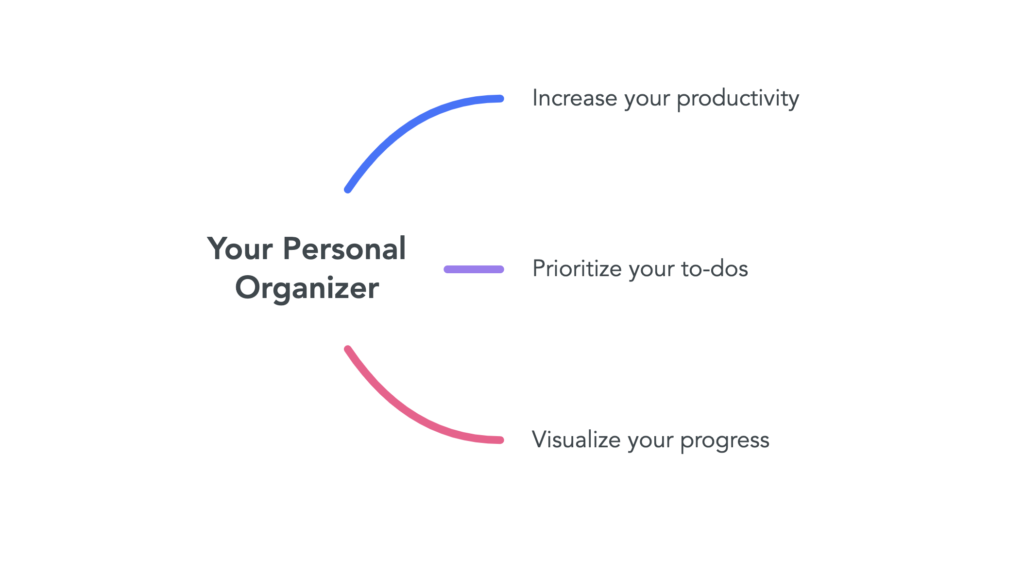
In this article, we’ll share a simple approach to building a ‘personal organizer’ mind map. The map will help you bring together all your ideas, tasks, to-dos, and “don’t forget” items into a single, easy-to-manage visual document that can adapt and evolve with your ever-changing life.
Creating a Personal Organizer Mind Map
Mind mapping provides a flexible way to capture, organize, and prioritize information and actions in a single view. Mind maps also help you see both the big picture and the small details. They allow you to break down big tasks that can feel overwhelming into smaller, more manageable steps. Let’s start with creating your mind map.
Step 1: Identify your life categories for your Personal Organizer
Start by thinking about the main areas of your life where tasks or actions might exist. Take a moment to consider the different things you need to do in the week ahead. Then, think about how you could batch some of these items under one or two-word labels. For example, you might have “home,” “work,” “study,” and “health” categories. Once you have identified your main categories, add these headings to your mind map as the main branches. Adding some images to these primary topics helps to make them stand out and provides quick visual cues.
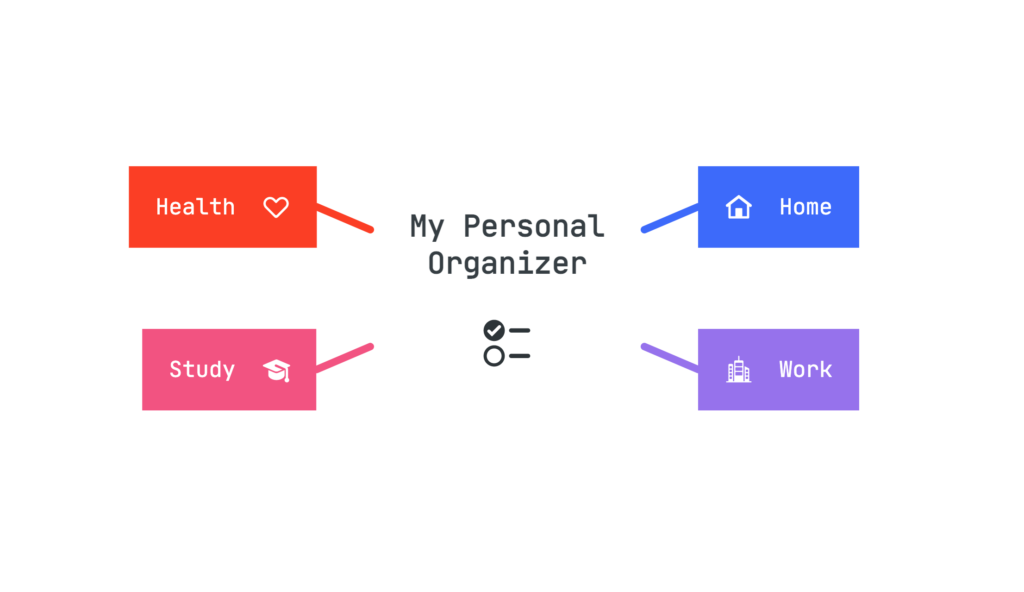
Remember, if you’re using mind map software, you can always change or edit these categories (and the images) later. Don’t overthink the categories or images too much at this stage. Otherwise, you’ll slow down!
Step 2: Add ideas, tasks and reminders
Next, populate your mind map with as many tasks, to-dos, and “don’t forget”s as you can think of right now. Add them to each of those main category branches.
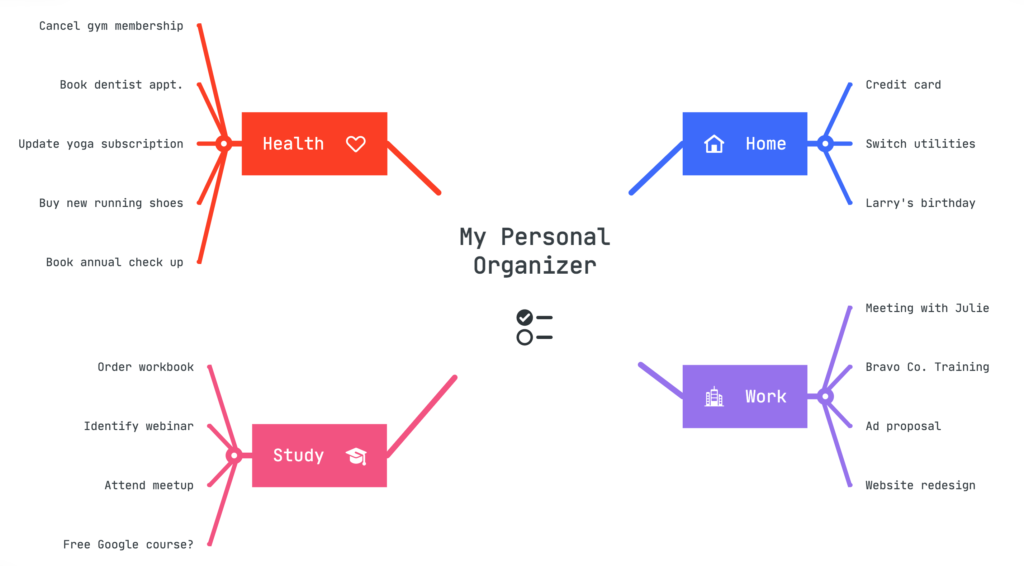
By the time you’re done, the mind map might look like the one below. It’s a bit like having four big to-do lists in a mind map structure. This is a good start and an improvement on one big list, but we can make life much easier still.
Step 3: Identify subcategories for your Personal Organization
We now need to look for some subcategories within each of those main areas and start to batch items together. In our example, we might create two subcategories under our ‘Health’ branch, one that covers ‘Fitness’ and another for ‘Medical’. Then, move the relevant actions into the respective areas. Likewise, in our ‘Work’ category, we might create a subcategory for “Internal” work tasks and “External” customer-facing tasks. Adding these subcategories will often prompt you to think of new items that you may not have considered initially. You should simply add those new items into the mind map, too, under the relevant section.
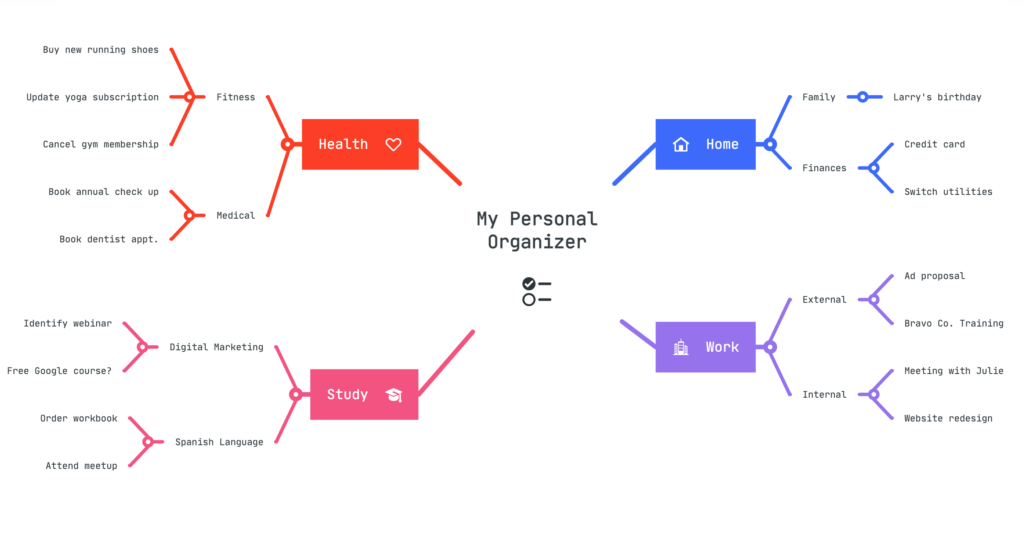
Take a look at your own map. Which items logically belong together in a subcategory? This can help you structure your information more easily. As you create your subcategories, think of any other tasks or items in that subcategory that you might have missed the first time. Add them in.
Step 4: Identify actions
Now that you have visibility of all the different areas of your life, start identifying where and what the actual actions are. Sometimes items we have in our to-do lists are more like headlines representing numerous smaller tasks that we have not identified. This means there is a risk that we don’t move things forward simply because we have not identified the next actual action within the larger headline item that we’ve written in our to-do list.
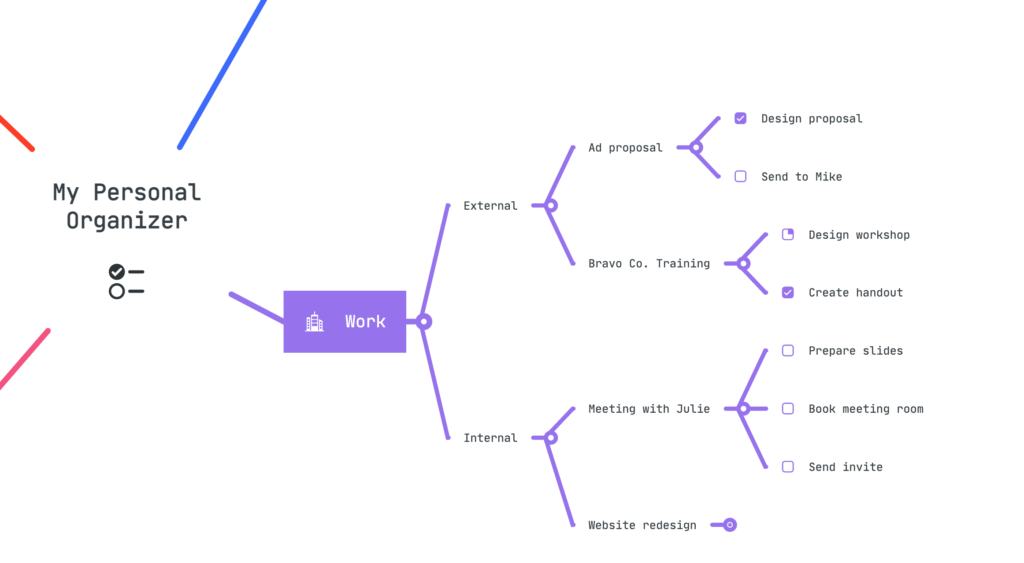
Your newly created personal organizer mind map is a great way to break down larger items until you can identify the next or first action you need to take. In some cases, this is not required. For example, “Cancel gym membership” is not that complex; it’s just an action you need to take. However, items like “Research schools” or “Website redesign” are more complex. These items benefit from being broken down into smaller pieces that are more manageable.
Once you break items down to the point where an action is identified, you can also mark the item as an action using an image or icon to identify it. This allows you to visually indicate how complete a particular action is, providing a quick and easy way to scan your Personal Organizer for actions and look for areas that need attention.
Step 5: Maintain and update your Personal Organization map
You should only need to create your personal organizer mind map once. After the initial creation, it should become a living document that you simply update and adapt on an ongoing basis. The way to ensure this becomes a helpful and empowering habit (rather than a time-consuming chore) is to view your Personal Organizer mind map as the control center for everything in your life. Think of the mind map as being ‘always open.’ Then, when a new task, project, or idea comes to you, simply add it to your mind map in the relevant section and category. Doing this will help you clearly understand where this new item sits in relation to everything else. This helps you prioritize and save time by identifying where there might be some quick wins that impact multiple areas.
Finally, it is worth remembering that if you are using mind mapping software, it can help to collapse or hide the sections you’re not focused on to minimize distractions. For example, you might collapse the “Home,” “Health,” and “Study” branches when you are at work. Even though these sections are out of sight, you (and your brain) can relax knowing that all key information needed is right at your fingertips when needed.
Next Steps
Developing a personal organization plan using a mind map is quick, easy, and fun! Here is a collection of selected mind map templates and webinars to get you started. Just remember, the best solution to maintaining an organizational system is the one you’re willing to stick to. Mind maps are a dynamic way to keep a visual overview of everything going on in your life. Give it a try!
